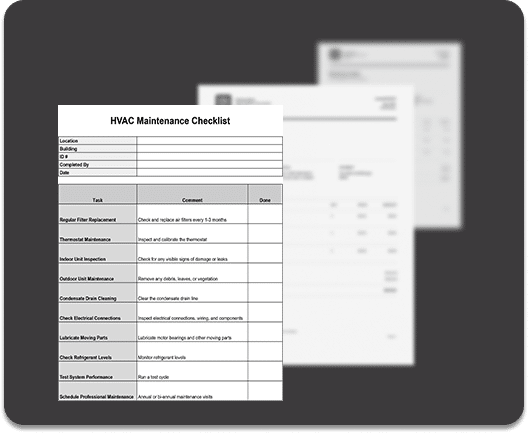
In recent years, the concept of hybrid work environments has gained significant traction as organizations seek to adapt to the changing needs and preferences of their workforce. Hybrid work environments blend elements of remote work and in-office work, offering employees the flexibility to choose where and how they work. For HR professionals, managing hybrid work arrangements presents unique challenges and opportunities.
In this blog post, we’ll explore the benefits of hybrid work environments, best practices for implementation, strategies for overcoming hybrid work challenges and more.
Unlocking Potential: How Hybrid Work Boosts Employee Satisfaction and Productivity
Hybrid work environments offer a wide range of benefits for both employees and employers. For employees, the flexibility to work remotely part of the time can lead to improved work-life balance, reduced commute times and increased autonomy over their schedules. This flexibility can also result in higher job satisfaction and lower stress levels, as employees have more control over when and where they work. (Hello, higher employee retention!)
From an employer’s perspective, hybrid work arrangements can lead to increased productivity, as employees are able to work in environments that are most conducive to their individual work styles. Additionally, hybrid work environments can help organizations attract and retain top talent by offering a competitive advantage in terms of workplace flexibility. By allowing employees to choose between remote and in-office work, organizations can tap into a wider talent pool and accommodate the diverse needs and preferences of their workforce.
Navigating the Terrain: Overcoming Obstacles in Hybrid Work Settings
While hybrid work environments offer many benefits, they also present unique challenges for organizations to navigate. One of the primary challenges is communication and collaboration. In a hybrid work environment, employees may be spread out across different locations, making it more difficult to coordinate projects and collaborate effectively. Another thing that will need nurturing is maintaining company culture and fostering a sense of belonging. This can be challenging when employees are not physically present in the same space.
Another challenge is ensuring equitable treatment of remote and in-office employees. Remote employees may feel disconnected from their in-office counterparts and miss out on opportunities for career advancement or professional development. We as HR professionals must work proactively to address these challenges and ensure that all employees feel valued and included, regardless of their location or work arrangement.
Steering Clear: Dodging Common Missteps in Hybrid Work Implementation
While hybrid work environments offer many benefits, they also present potential pitfalls that organizations must be mindful of. One common pitfall is overreliance on technology. In a hybrid work environment, communication and collaboration tools are essential for keeping remote and in-office employees connected. However, organizations must be careful not to rely too heavily on technology at the expense of human interaction. It’s important to strike a balance between virtual and in-person communication to ensure that employees feel connected and engaged.
Another pitfall is inequitable treatment of remote and in-office employees. Remote employees may feel isolated or left out of important conversations or decision-making processes. To avoid this, organizations must work proactively to ensure that all employees, regardless of their location or work arrangement, have equal opportunities for career advancement, professional development, and recognition. With some care, these can be avoided!
Blueprint for Success: Crafting Effective Strategies for Hybrid Work
Successfully implementing hybrid work environments requires careful planning and consideration. One best practice is to establish clear policies and guidelines outlining expectations for remote and in-office work.
This includes setting guidelines for:
- Communication
- Collaboration
- Performance management
- Work trainings
- Addressing logistical considerations such as equipment and technology requirements
Leading from Afar: Essential Strategies for Remote Team Management
Effectively managing remote teams is essential for HR professionals to ensure the success and productivity of employees working outside of the traditional office environment. One key aspect of managing remote teams is establishing clear communication channels and expectations. An important role of HR professionals using hybrid work models is to help remote teams stay connected and informed by implementing regular check-ins, virtual team meetings and communication platforms that facilitate real-time collaboration and information sharing.
Another important aspect of managing remote teams is fostering a sense of team cohesion and camaraderie. You can do this by organizing virtual team-building activities, social events and informal gatherings to help remote team members feel connected and valued. By creating opportunities for remote employees to interact with each other and with in-office colleagues, this fosters a sense of belonging and community within the team.
Building Bonds: Strengthening Team Cohesion in Hybrid Work Settings
In hybrid work environments, fostering team building and employee engagement becomes even more crucial to maintaining a cohesive and motivated workforce. As HR professionals leading the team, we play a vital role in designing and implementing strategies to cultivate a sense of camaraderie and connection among remote and in-office team members.
One effective approach is to organize virtual team-building activities and social events that bring employees together in a fun and interactive way. These activities can range from virtual happy hours and coffee chats to online games and team challenges that encourage collaboration and bonding.
By leveraging technology and providing opportunities for remote employees to interact and collaborate in virtual settings, we can help foster a sense of belonging and inclusion, even when team members are physically apart.
Another way to support employee engagement is through reward and recognition programs, like the Excellence Awards, Employee Voice Edition are a great way to acknowledge employees’ achievements and milestones, whether they occur in the office or remotely. Consistent recognition helps reinforce employee engagement and loyalty, regardless of where employees are located.
Setting the Standard: Establishing Guidelines for Hybrid Work Success
Developing and implementing hybrid work policies and procedures is essential for companies to ensure consistency, fairness and transparency in how hybrid work arrangements are managed within the organization.
One key aspect of hybrid work policies and procedures is establishing clear guidelines for scheduling flexibility and remote work eligibility criteria. HR professionals can work with leadership and department heads to define parameters for when and how employees can work remotely, taking into account business needs, team dynamics and individual preferences.
Win-Win: How Hybrid Work Boosts Morale and Organizational Success
Let’s talk about why hybrid work models can benefit everyone! The benefits of hybrid work environments extend beyond individual employees and can have a positive impact on the organization as a whole. For employees, the flexibility to work remotely part of the time can lead to increased job satisfaction, improved work-life balance, and reduced stress levels. This, in turn, can lead to higher productivity and lower turnover rates, as employees are more likely to remain with an organization that offers flexibility and autonomy.
From an organizational perspective, hybrid work environments can lead to cost savings, increased productivity and improved employee retention. By allowing employees to work remotely part of the time, organizations can reduce overhead expenses associated with office space and facilities. Additionally, increased flexibility and autonomy can lead to higher levels of employee engagement and satisfaction, resulting in higher levels of productivity and lower turnover rates.
Embracing the Future: Navigating Hybrid Work Environments with Confidence
As organizations continue to adapt to the evolving needs and preferences of their workforce, hybrid work environments have emerged as a popular option for balancing flexibility and collaboration so it looks like they’re here to stay. For HR professionals, managing hybrid work arrangements requires careful planning, clear communication, and a commitment to fostering a culture of inclusion and belonging. By understanding the benefits, challenges, best practices, and potential pitfalls of hybrid work environments, we have the opportunity to play a key role in ensuring the success of remote and in-office employees alike.
Want to hear more of our thoughts on hybrid work? Listen to our podcast, Seizing the Opportunities of Uncertainty: 5 Strategies for Success in a Hybrid Work Environment, HERE.


















